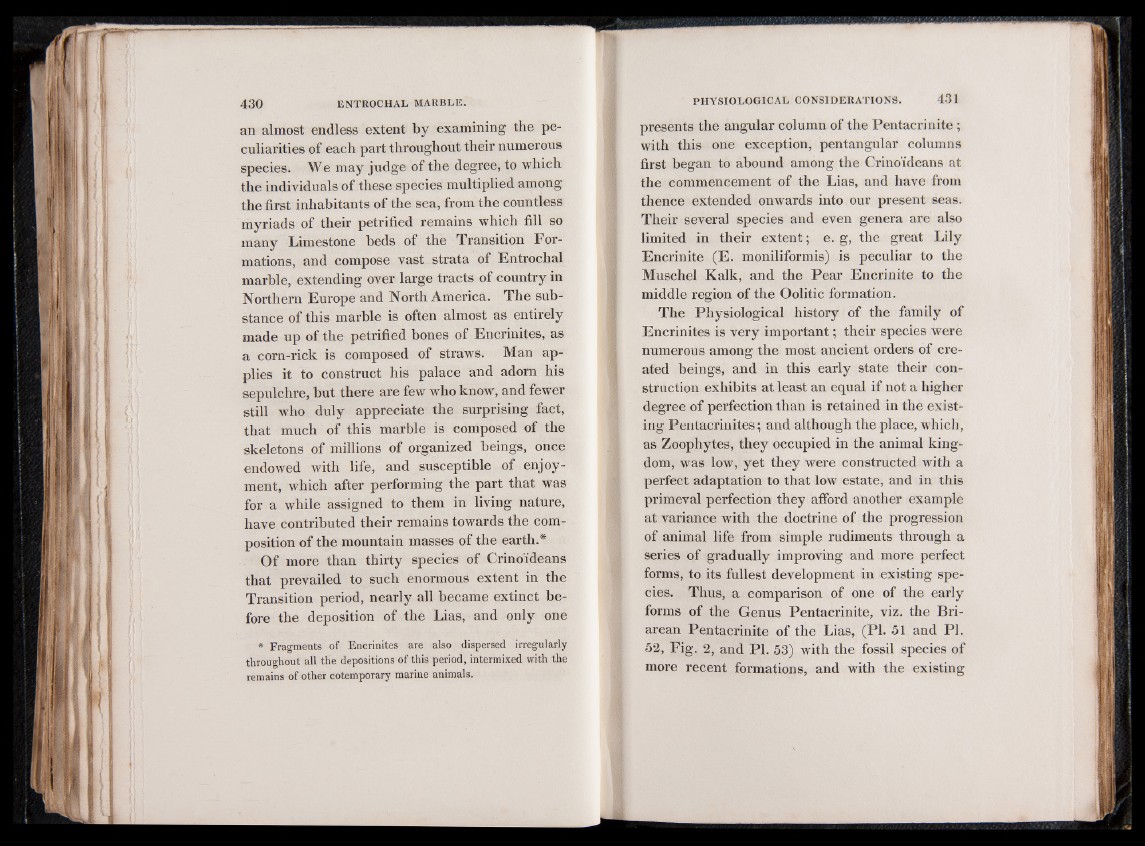
an almost endless extent by examining the peculiarities
of each part throughout their numerous
species. We may judge of the degree, to which
the individuals of these species multiplied among
the first inhabitants of the sea, from the countless
myriads of their petrified remains which fill so
many Limestone beds of the Transition Formations,
and compose vast strata of Entrochal
marble, extending over large tracts of country in
Northern Europe and North America. The substance
of this marble is often almost as entirely
made up of the petrified bones of Encrinites, as
a corn-rick is composed of straws. Man applies
it to construct his palace and adorn his
sepulchre, but there are few who know, and fewer
still who duly appreciate the surprising fact,
that much of this marble is composed of the
skeletons of millions of organized beings, once
endowed with life, and susceptible of enjoyment,
which after performing the part that was
for a while assigned to them in living nature,
have contributed their remains towards the composition
of the mountain masses of the earth.*
Of more than thirty species of Crinoideans
that prevailed to such enormous extent in the
Transition period, nearly all became extinct before
the deposition of the Lias, and only one
* Fragments of Encrinites are also dispersed irregularly
throughout all the depositions of this period, intermixed with the
remains of other cotemporary marine animals.
presents the angular column of the Pentacrinite ;
with this one exception, pentangular columns
first began to abound among the Crinoideans at
the commencement of the Lias, and have from
thence extended onwards into our present seas.
Their several species and even genera are also
limited in their extent; e. g, the great Lily
Encrinite (E. moniliformis) is peculiar to the
Muschel Kalk, and the Pear Encrinite to the
middle region of the Oolitic formation.
The Physiological history of the family of
Encrinites is very important; their species were
numerous among the most ancient orders of created
beings, and in this early state their construction
exhibits at least an equal if not a higher
degree of perfection than is retained in the existing
Pentacrinites; and although the place, which,
as Zoophytes, they occupied in the animal kingdom,
was low, yet they were constructed with a
perfect adaptation to that low estate, and in this
primeval perfection they afford another example
at variance with the doctrine of the progression
of animal life from simple rudiments through a
series of gradually improving and more perfect
forms, to its fullest development in existing species.
Thus, a comparison of one of the early
forms of the Genus Pentacrinite, viz. the Bri-
arean Pentacrinite of the Lias, (PL 51 and PI.
52, Fig. 2, and PI. 53) with the fossil species of
more recent formations, and with the existing